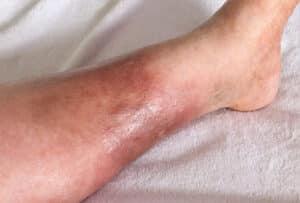
Deep vein thrombosis
This condition results when a blood clot (or “thrombus”) forms in the deep veins in the legs. This not only causes painful swelling, but if the blood clot breaks loose from its position it can travel through the blood stream and into the lungs. This prevents normal blood flow, which decreases the amount of oxygen being carried through the body.
Who is at risk for deep vein thrombosis?
There are several factors that can put you at increased risk for this condition: a family history of blood clotting disorders, using birth control or hormone replacement therapy that contains estrogen, obesity, cancer, pregnancy, smoking, and inflammatory bowel disease. Unfortunately, the early signs that you have deep vein thrombosis can look like many other health issues. There may be swelling and pain in the legs, a warm feeling in the legs, and red or discolored skin on the leg. The warning signs that the blood clot has moved to your lungs include chest pain, rapid pulse, and a sudden shortness of breath.
How can you prevent deep vein thrombosis?
To keep your veins healthy there are several things you can do. Make sure to exercise so that the blood flows smoothly through veins, don’t smoke, stay well hydrated, maintain a healthy weight and a healthy diet, raise the foot of your bed to keep blood from pooling, and don’t sit for too long – make sure you get up every hour or so to move your legs around and prevent clotting. And, if you have any of the above risk factors, make sure you talk to your doctor about deep vein thrombosis.
If you are concerned about the health of your veins, don’t wait – contact the office of Dr. Sammy A. Zakhary today. Call the office in Glendale, Arizona, at (623) 258-3255 for an appointment.
